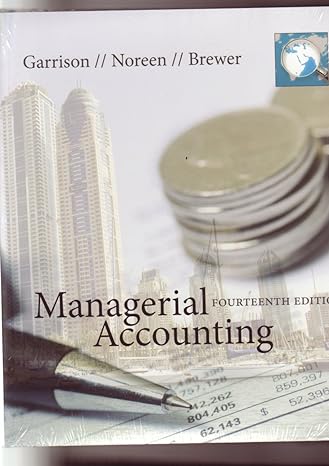Payback Period and Simple Rate of Return [LO5, LO6] The Heritage Amusement Park would like to construct
Question:
Payback Period and Simple Rate of Return [LO5, LO6]
The Heritage Amusement Park would like to construct a new ride called the Sonic Boom, which the park management feels would be very popular. The ride would cost $450,000 to construct, and it would have a 10% salvage value at the end of its 15-year useful life. The company estimates that the following annual costs and revenues would be associated with the ride:
Ticket revenues . . . . . . . . . . . . . . . . $250,000 Less operating expenses:
Maintenance . . . . . . . . . . . . . . . . . $40,000 Salaries . . . . . . . . . . . . . . . . . . . . 90,000 Depreciation . . . . . . . . . . . . . . . . . 27,000 Insurance . . . . . . . . . . . . . . . . . . . 30,000 Total operating expenses . . . . . . . . . 187,000 Net operating income . . . . . . . . . . . . $ 63,000 Required:
(Ignore income taxes.)
1. Assume that the Heritage Amusement Park will not construct a new ride unless the ride provides a payback period of six years or less. Does the Sonic Boom ride satisfy this requirement?
2. Compute the simple rate of return promised by the new ride. If Heritage Amusement Park requires a simple rate of return of at least 12%, does the Sonic Boom ride meet this criterion?
Step by Step Answer:







